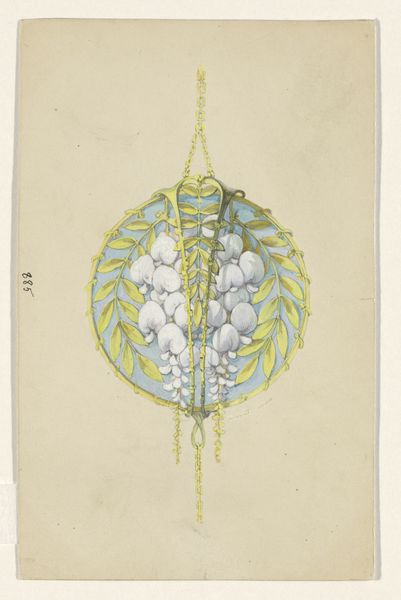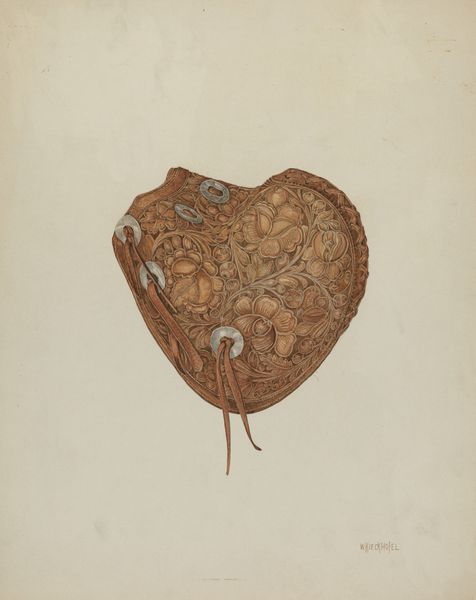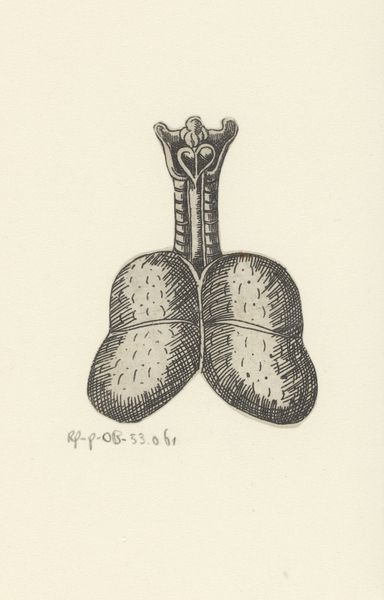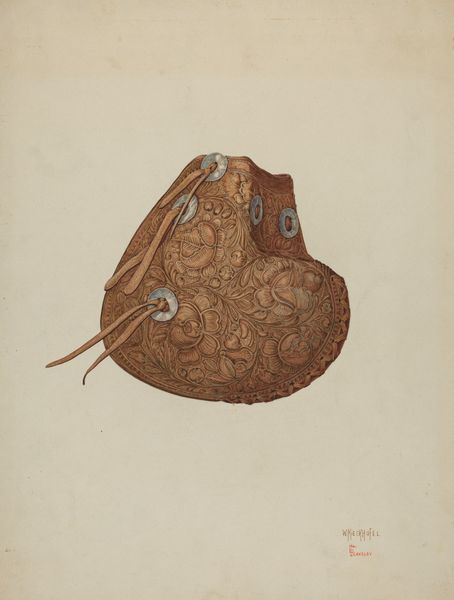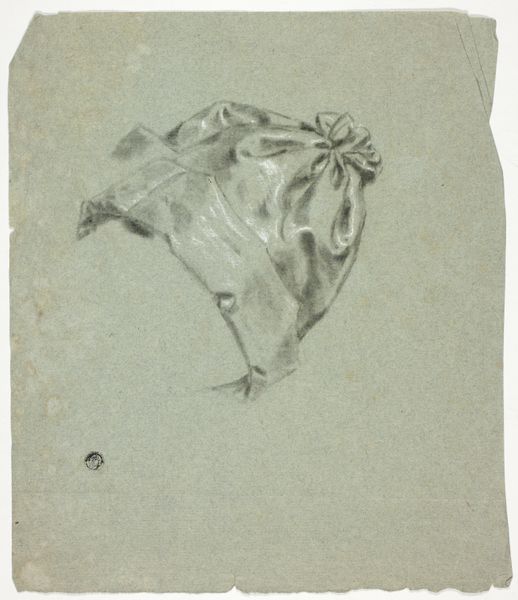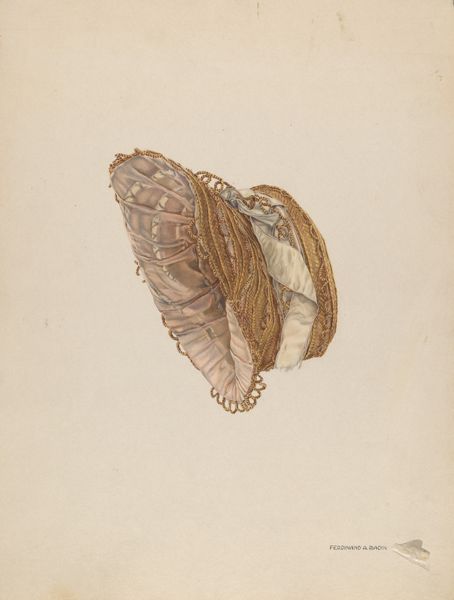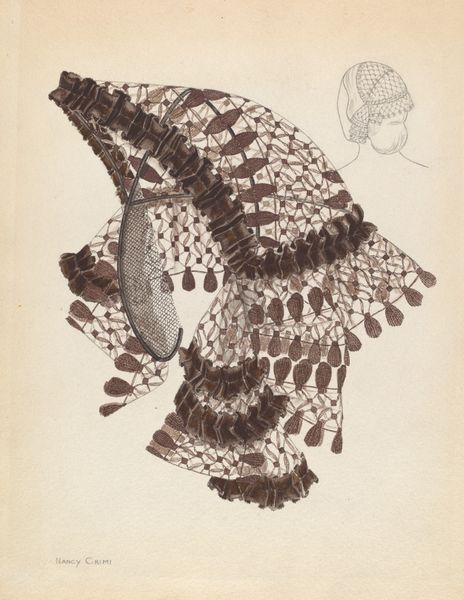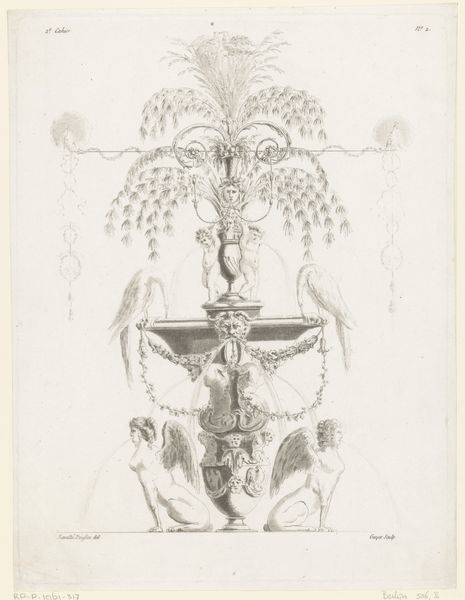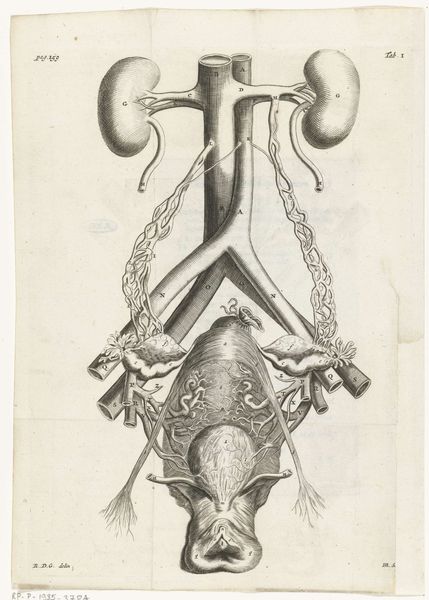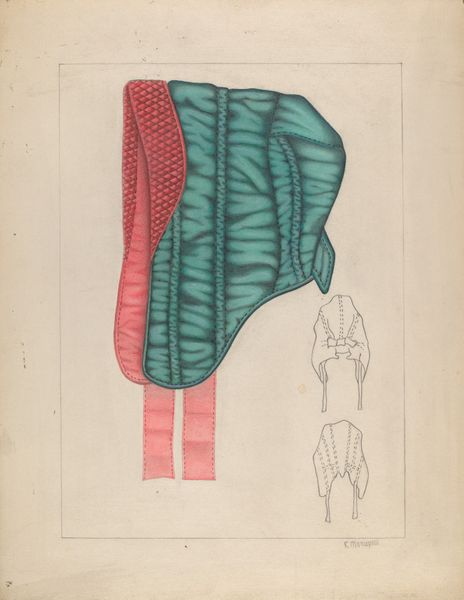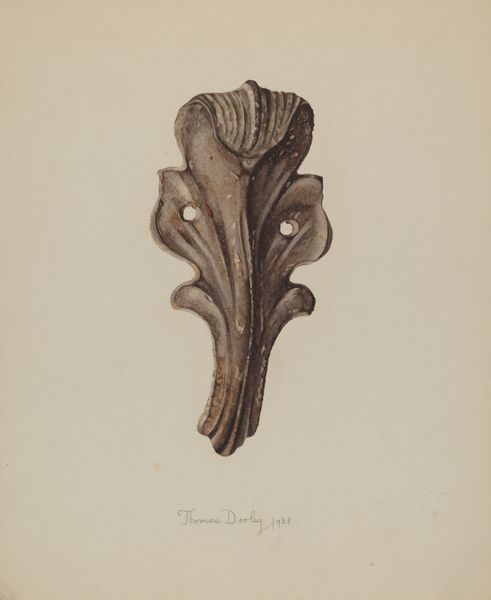
drawing, watercolor
#
drawing
#
water colours
#
watercolor
#
pencil drawing
#
watercolor
Dimensions: overall: 35.5 x 26.7 cm (14 x 10 1/2 in.) Original IAD Object: 6 1/2" high; 4 1/2" wide
Copyright: National Gallery of Art: CC0 1.0
Curator: Good morning. We are standing before Douglas Campbell's watercolor and pencil drawing, "Drapery for Candlestick," created around 1939. Editor: The first impression is quite striking, like an intricate, slightly menacing snowflake. The contrast between the cool tones of the drapery and the golden light shining through it creates an intriguing tension. Curator: Indeed. The visual elements work well together. Note the interplay of light and shadow achieved through the delicate watercolor washes, defining the form and texture of what we could describe as stylized lace. Campbell really pushes a unique understanding of shape. Editor: Speaking of shape, do we know what context this drapery would have existed in? Was this part of a specific theatrical production, or interior design commission? Curator: While precise historical details about this specific drapery remain elusive, we know that at this time Campbell did stage and costume design. His sets became extremely popular at the time and he designed for Broadway's original "Oklahoma!". There, he innovated ways for set design to impact performance—his innovations directly informed many works still studied and performed today. Editor: Fascinating! It speaks to the larger cultural shift of the era, how art wasn't confined to traditional spaces but infused performance and everyday environments. One notices a gothic style echoed here. There is definitely a hint of ceremony in the very idea of a candlestick covering. Curator: From a formalist view, observe how Campbell masterfully employs positive and negative space within the design. The sharp, jagged edges create a dynamic rhythm, contrasting with the organic, flowing patterns within the drapery itself. One also sees this as a study in contrasts. Editor: I concur. It offers a peek into a particular historical period, where the boundaries of art, theatre, and societal expression blurred into this type of innovative design work. Curator: Absolutely, understanding those social elements in context is an important part of art. Now, zooming back in... it's all very stimulating. Editor: Quite right. There's more than meets the eye at first glance here, something rather special to reflect upon.
Comments
No comments
Be the first to comment and join the conversation on the ultimate creative platform.
